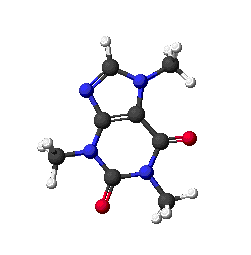
Chemistry
Chemistry 16: 9-10

WebLecture
Acids and Bases: Lewis Acids
Outline
- Lewis Acids and Bases
- Types of Acids
- Practice with Concepts
- Discussion Questions
- Optional Website Reading
Lewis Acids and Bases
We have two definitions of acids and bases so far:
- Arrhenius' definition of acids and bases is limited to behavior of solutes in aqueous solutions. We've seen, however, how the Arrhenius theory fails to account for the behavior of ammonia in solution.
- Acids increase the H+ concentration in water.
- Bases increase the OH- concentration in water.
- The Brønsted-Lowry definition is not limited to aqueous solutions.
- Acids donate protons (H+ ions), and so doing become the acid's conjugate base.
- Bases accept protons (H+ ions), and so doing become the base's conjugate acid.
- The Lewis definition focuses on the electron pair exchanges instead of proton exchanges. It aligns to oxidation number theories and will support our study of electrolytes, ions in solutions that carry electric current, such as the acids in batteries. In the Lewis definition,
- Acids accept electron pairs.
- Bases donate electron pairs.
All Brønsted-Lowry acids are Lewis acids, but not all Lewis acids are Brønsted-Lowry acids. In the reaction of boric acid with water, we have
B(OH)3 + H2O → B(OH)-4 + H+.
B(OH)3 is an electron receptor and a Lewis acid, but in this case, the water molecule is the proton donor and Brønsted-Lowry acid. The Lewis theory does not depend on the presence of an H atom in the acid that can act as a proton donor.
In this definition, CO2 also acts as an acid, accepting electrons when dissolved in water to for a bicarbonate ion with hydroxide ions:
CO2 + OH- → OCOOH-
Again, the Lewis acid does not donate a proton (there is no H in CO2 to donate).
The definition of Lewis acids allow us to account for a collateral characteristic of Brønsted-Lowry acids (electron exchange) in cases where there is no proton being donated, but electron pair exchange still occurs.
Types of Acids
We can now make some general rules about shapes of molecules, chemical bonds, and acid reaction properties.
| Halide acids HX | If the halide bond is strong, the acid will not tend to dissociate, and the acid will be weak. The relative strength depends on the bond strength plus the electron attachment enthalpy, with bond strength being the determining factor. The greater this sum, the weaker the acid. |
| Oxoacids: non-metal atoms attached to oxygen, some of which is attached to hydrogen (e.g. HNO2) | Again, acid strength depends on bond strength plus electron affinity, but in this case, electron affinity is the determining factor. Adding oxygen to the complex distributes the negative charge so that the H is more easily dissociated, making HNO3 a stronger acid than HNO2. |
| Carboxylic Acids: acids containing -CO2H groups | The addition of electronegative substitutes for one of the H atoms increases the acidity of a compound: CH3CO2H (acetic acid) is less acidic than ClCH2CO2H (chloroacetic acid). |
| Hydrated Metal Acids (M+ • nH2O) | Because the metal ion M+ is positively charged, the attracted water molecule are more extremely polarized and the H+ ion is easily detached, making the complex as a whole a proton donor. |
| Anion Bases (negatively charged atoms or molecules) | The negative charge on the anion attracts H atoms in water molecules, causing them to dissociate and form bonds with the anion, so the anion acts as a base, turning water into an acid proton donor. |
Practice with the Concepts
Discussion Questions
- Why are multiple definitions of acids and bases useful?
- How do electron affinity and bond strength influence acid strength?
Optional Readings
You may want to revisit the ChemGuide page on Acids and Bases for more examples.
© 2005 - 2025 This course is offered through Scholars Online, a non-profit organization supporting classical Christian education through online courses. Permission to copy course content (lessons and labs) for personal study is granted to students currently or formerly enrolled in the course through Scholars Online. Reproduction for any other purpose, without the express written consent of the author, is prohibited.